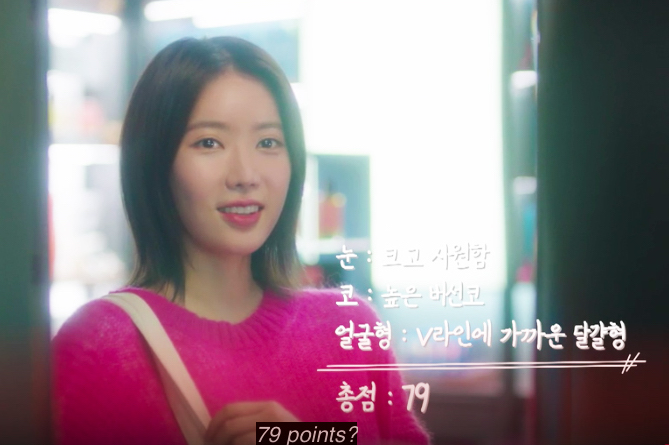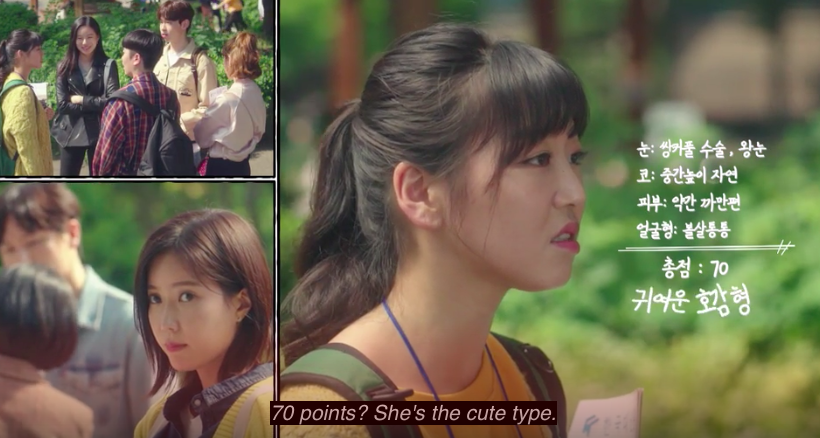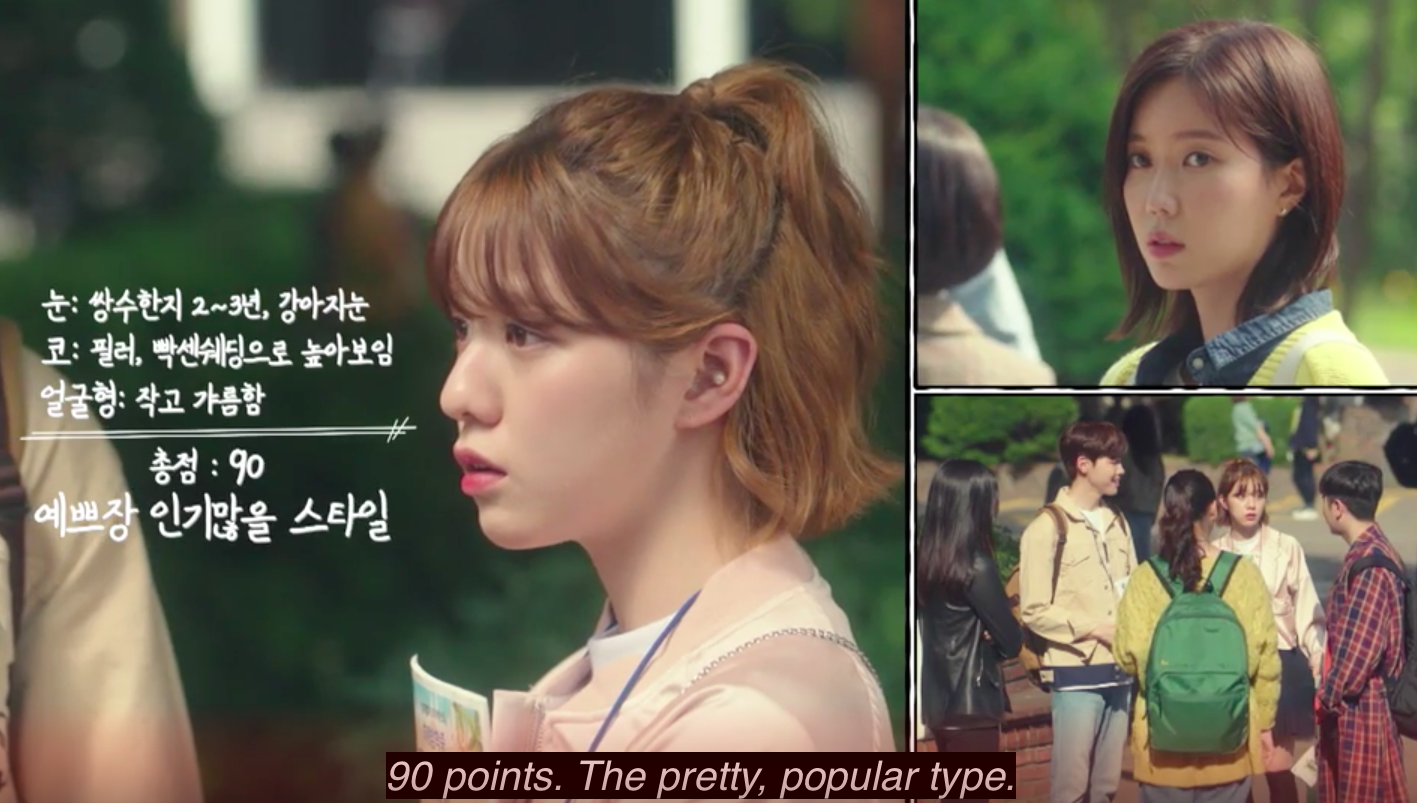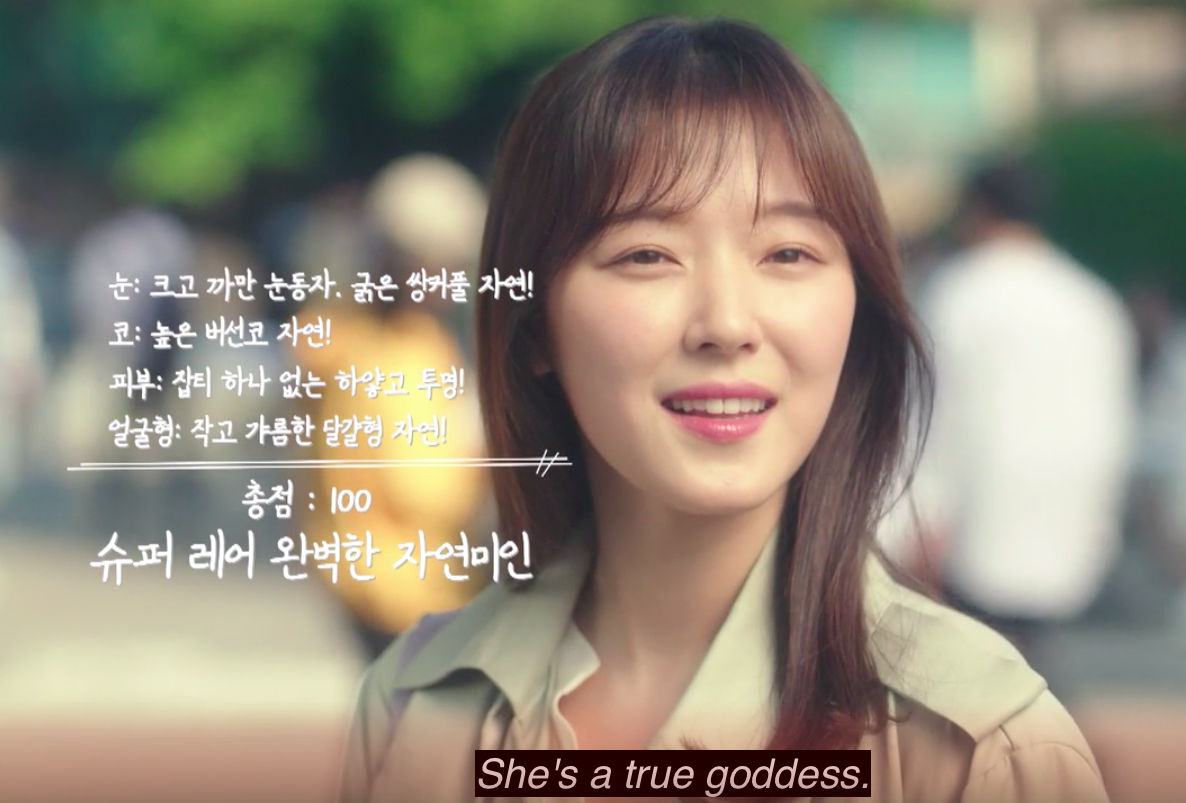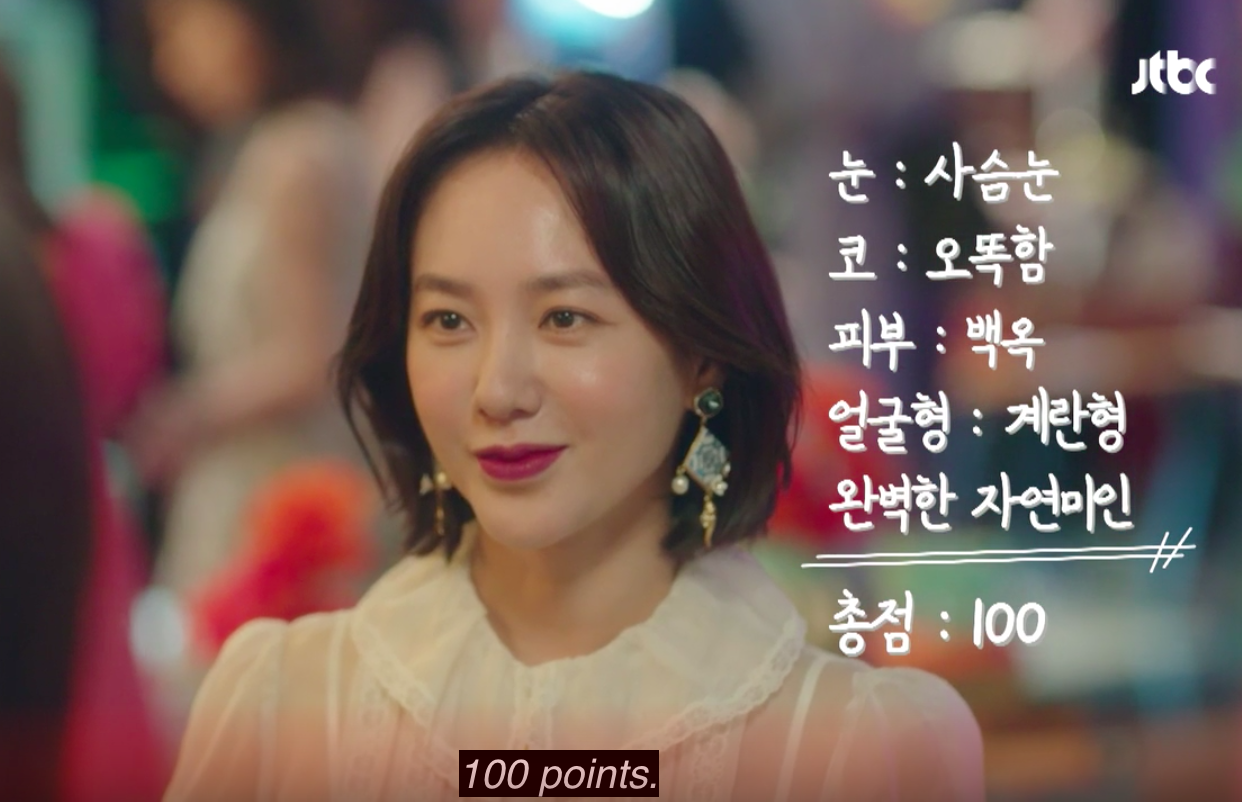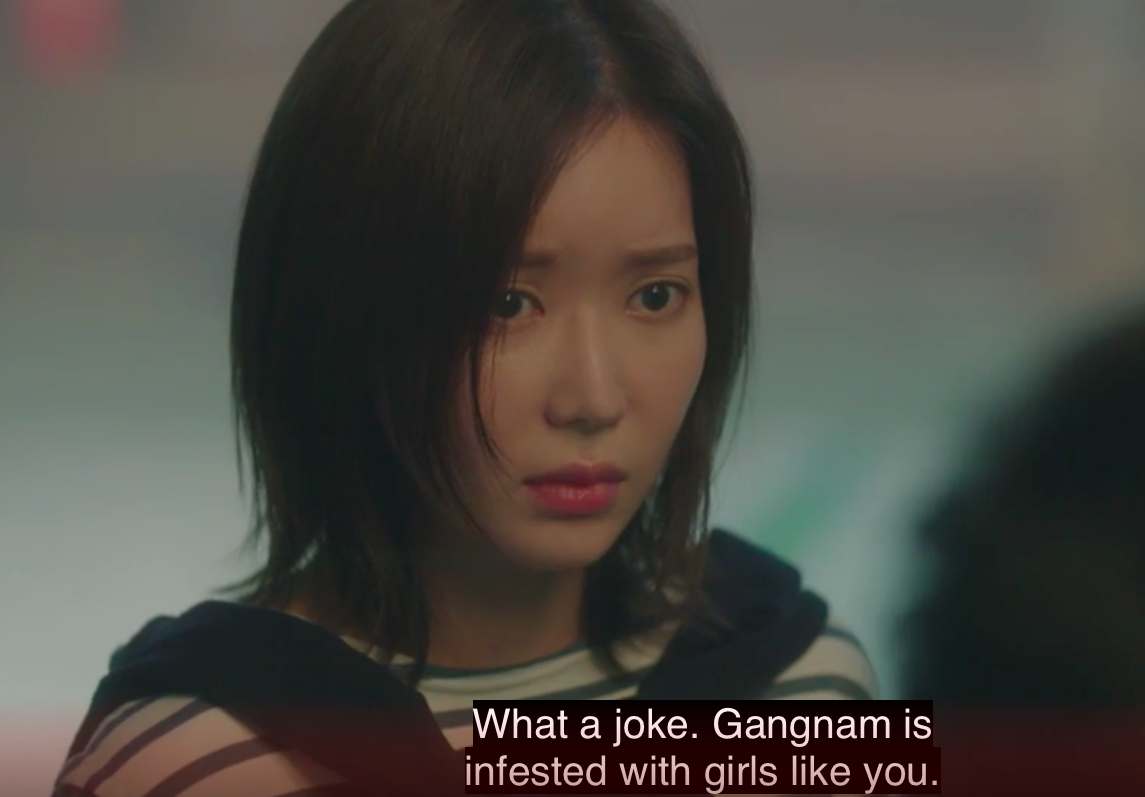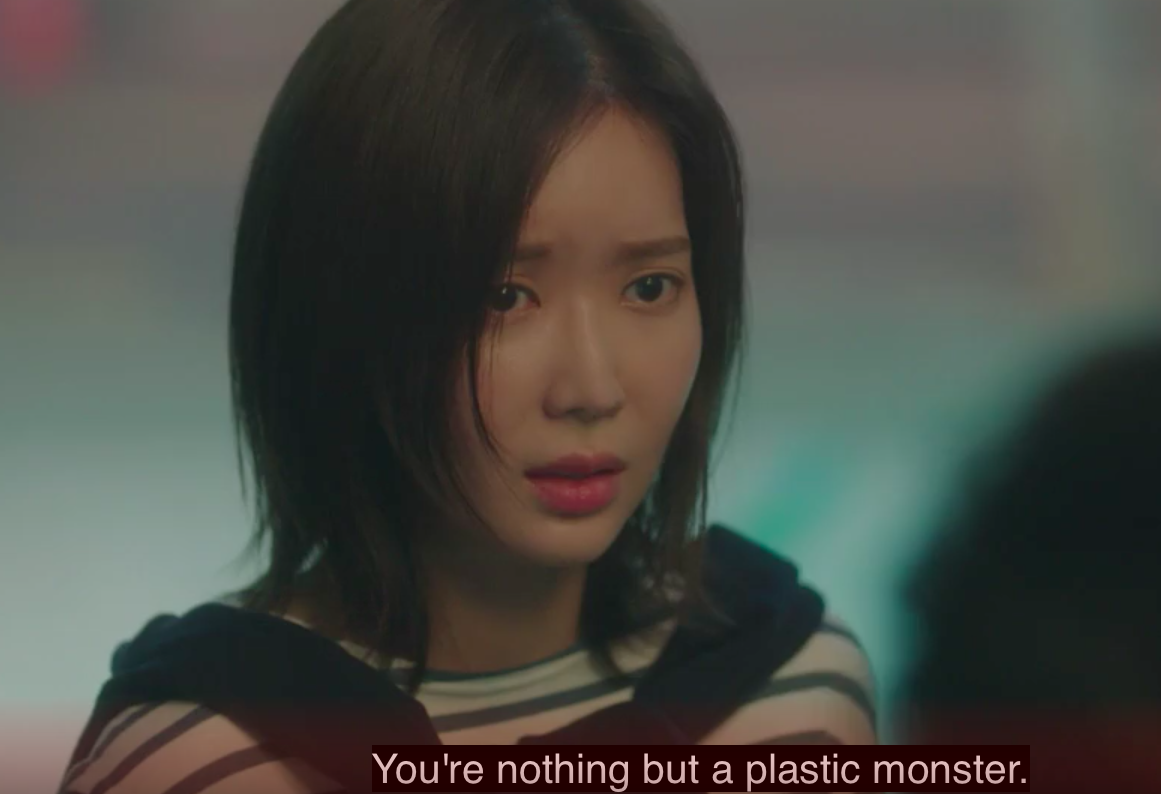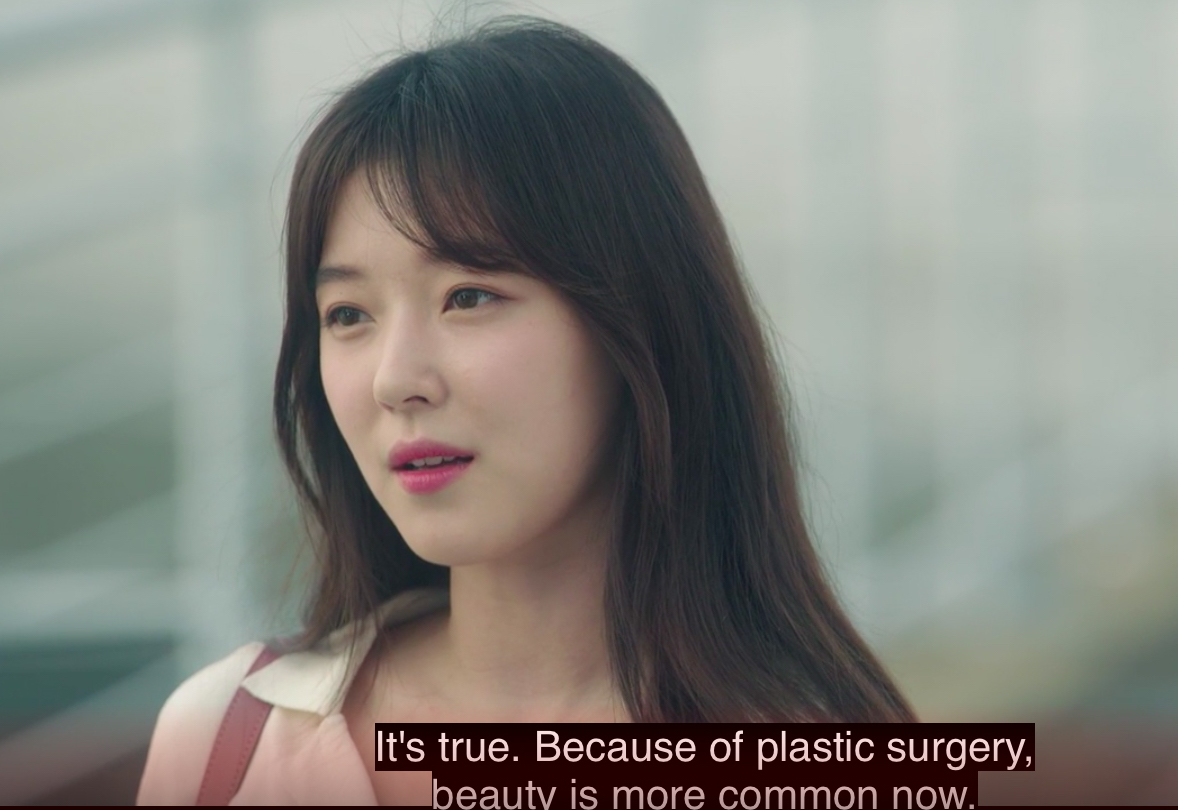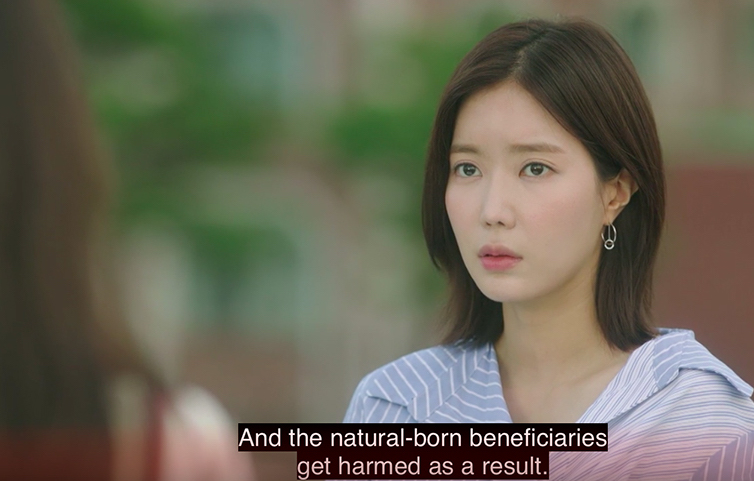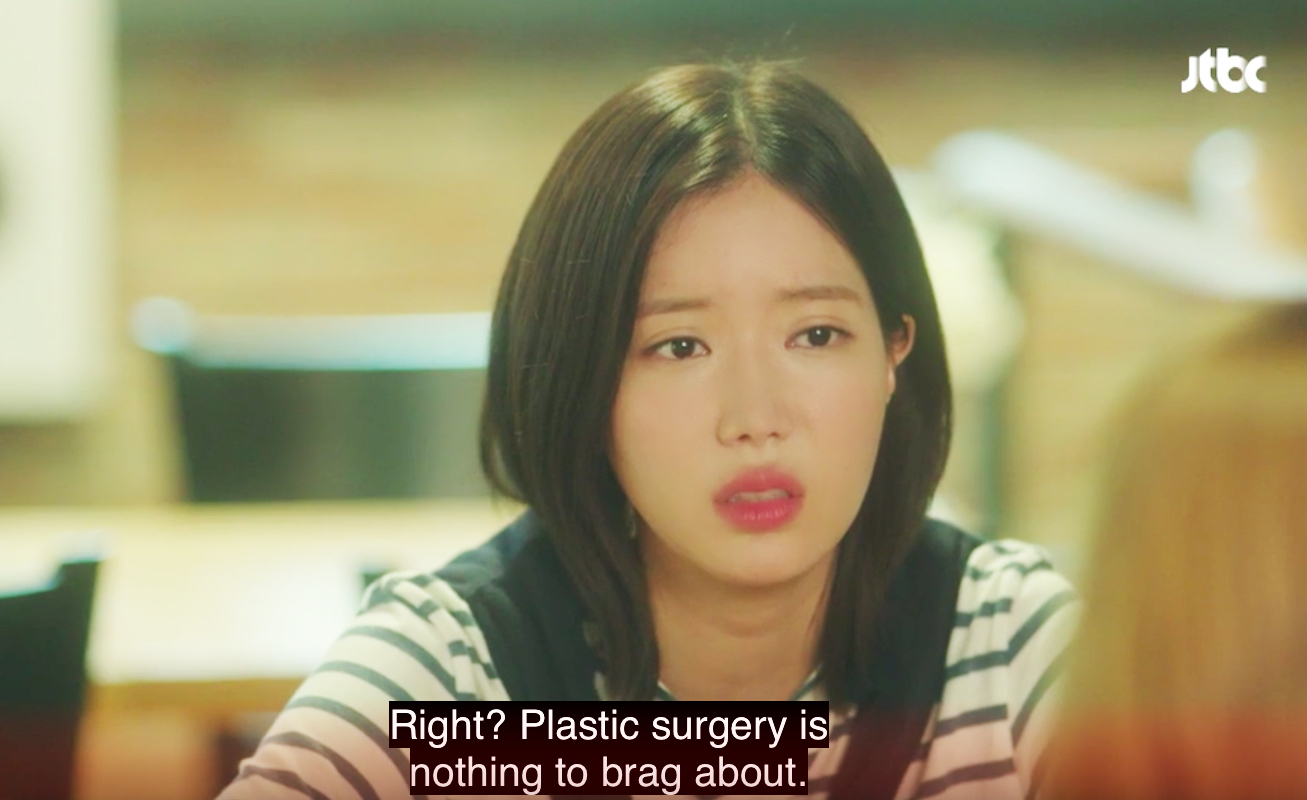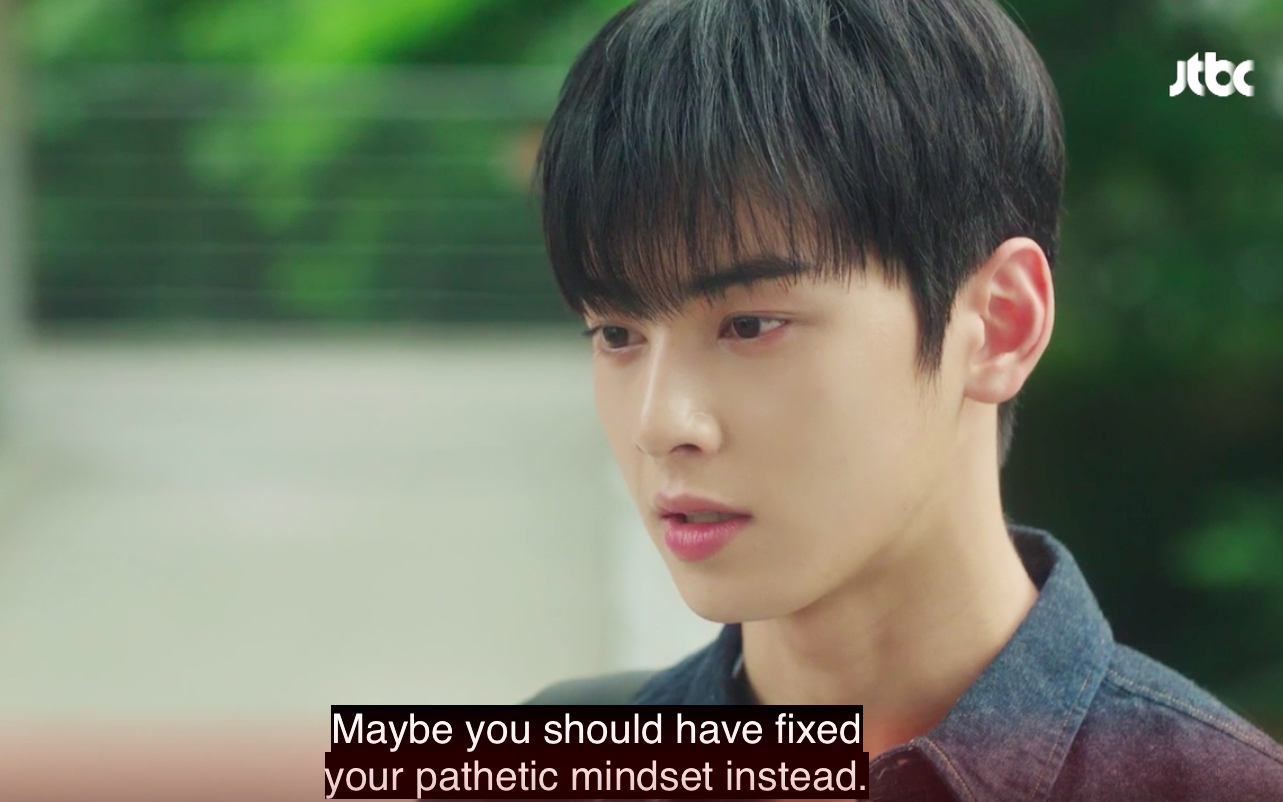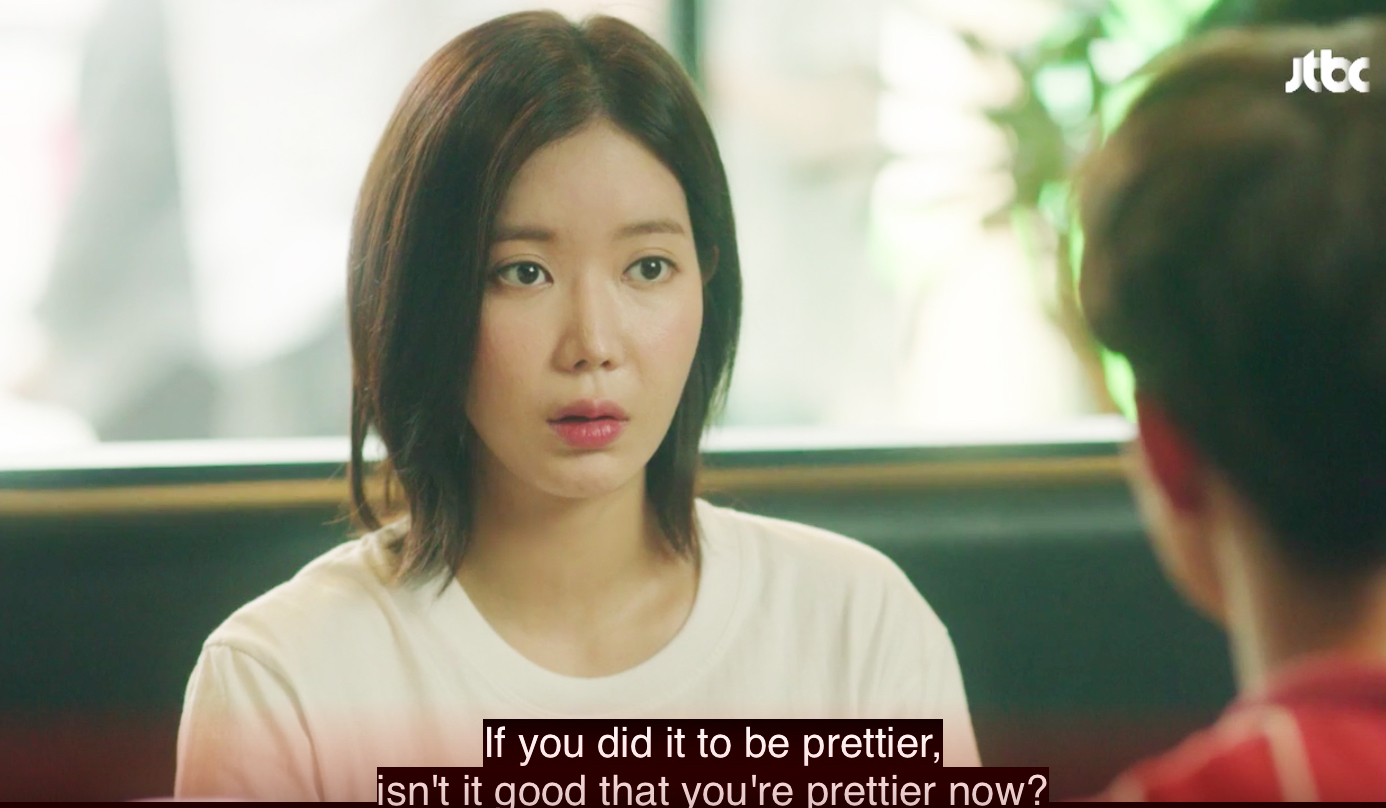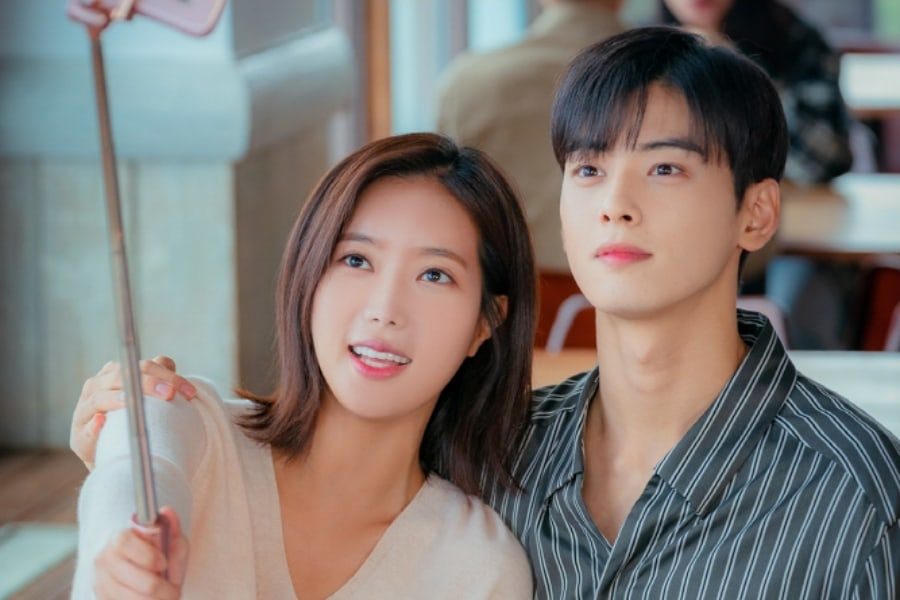What K-Drama 'My ID Is Gangnam Beauty' Reveals About Korean Beauty Standards RN
South Korea may be called the plastic surgery capital of the world — stats from 2009 to 2015 have estimated that up to one-third of women in Seoul (and about half the women in their 20s) have gotten work done — but we’re seeing a growing cultural pushback on what defines real beauty. And this tension is no more evident than in the new Korean drama My ID is Gangnam Beauty, where we’re given a raw look into the apparently conflicting standards of beauty that are trending in Korea rn. Here, we break down what we've learned from the K-drama and discover that the issues are, predictably, more than skin deep.
For better or for worse, it’s no secret that South Korea has grown to be the mecca for mega makeovers — of the overnight, permanent kind. Want to add a fold to your monolid? Done. Want your squarish jaw to mimic the v-line of K-pop stars? Not a problem. Want your flat forehead to curve like a baby’s? Piece of cake. The hard part is choosing from one of the 500 or so clinics located inside Seoul’s Gangnam district alone.
In the nation that ranks number one in the world for plastic surgery per capita, women — and men — can aspire to look like anybody they want. It’s to the point that some cosmetic surgery centers offer verification certificates to international patients in case they need help at immigrations proving that they are indeed who they say they are.
Just a few decades ago, plastic surgery was not as easily affordable, accessible, and acceptable in South Korea. Going under the knife was reserved for the wealthy elite, such as celebrities, and it wasn’t as confidently shared as it is today. Instead of radical transformation, the goal was subtle but noticeable and enviable improvement that didn’t scream fake. Post-op patients also recovered under cover, not shopping around in bandages and masks as can be seen now.
Then with the boom of Seoul’s plastic surgery industry, thanks in large part to the Hallyu wave of the 2000s, cosmetic procedures became more common, if not a given. It also grew increasingly popular to proudly show off that you’d gone under as a sign of wealth and coolness. Everyone’s doing it, so what’s the big deal? was the mindset, and still is for the most part.
However, there’s been a recent trend towards natural beauty — even if it isn’t achieved naturally — and away from what’s come to be known as “Gangnam beauty,” a look that’s very obviously man-made. Although this doesn’t necessarily mean soaring plastic surgery rates have lowered (or will anytime soon), there has been a rise in backlash against the pervasiveness and aggressiveness of plastic surgery ads, with complaints that the cosmetic industry is feeding on young girls’ insecurities and setting an unhealthy barometer of beauty.

This conflict between natural versus plastic is captured in the Korean drama My ID is Gangnam Beauty, where the main character Kang Mirae (Im Soo Hyang) struggles with weight, acne, monolids, and bullying — to the point where she nearly commits suicide. Her battle leads her to be obsessive over her own and others’ physical appearance.
This telling drama grants us an unfiltered look at how beauty can be uniquely perceived and valued in a dichotomous society — where natural beauty is highly prized yet giving cosmetic surgery as a high school graduation gift is to some as common as giving flowers — and the inevitable friction that arises.
The “Face Score”
Though a victim of bullying herself, Kang Mirae is no innocent bystander when it comes to judging others based on looks. She may be nice about it, but her natural instinct when meeting people is to instantly score their faces.
At college orientation, Mirae meets her department colleagues and goes Simon Cowell on their faces. She ranks this “cute” classmate a 70 based on her eyes, nose, skin, and face shape.
This lucky friend gets a higher score of 80, but Mirae concludes she can be an 85 if she tried a little harder. Thanks for the compliment?
This “pretty and popular” peer receives a whopping 90, thanks to her 2- to 3-year-old eye surgery and nose fillers.
Only two women in Mirae’s life score a perfect 100. One is her soon-to-be enemy Hyun Soo Ah, whom she judges is a “super rare, natural beauty.”
The other is the mother of her crush Do Kyung Seok, another perfect natural beauty.
Getting judgy
Truth be told, when you’re walking around the streets of Gangnam IRL and come across doll face after doll face, you start to wonder what each gorgeous visage had done. But what ensues in the drama shows that the problem occurs when this little curiosity determines how you define that person and even how you treat the person.
That’s what happens in the drama, as many of Mirae’s colleagues quickly stereotype her and Soo Ah based on their physical appearance. Because Mirae is a Gangnam beauty, they assume she partied and dated around a lot. On the other hand, they assume Soo Ah, a natural beauty, is kind and should date a handsome or rich guy.
These stereotypes of Gangnam beauty and natural beauty seem harmless and fun, but they end up pitting the two characters against each other in an ugly rivalry that goes beyond skin deep.
Whether it’s a face-ranking system, vicious gossip, or unsolicited photographs posted on social media, the students’ narrow-mindedness and immaturity perpetrate the objectification of females (and males) and set up an impossible standard of beauty. Unfortunately, the results are not just little catfights in school bathrooms but also damaged lives.
Inner beauty
As the truth is revealed, it turns out that Soo Ah, who’s had nothing fixed on the outside, needs a lot of work done on the inside. Without trying to spoil too much, we find out that she’s jealous of Mirae because she achieved her beauty via surgery, becoming “unfair” competition for natural girls like Soo Ah.
Ironically, Mirae, who’s had a lot of work done on the outside, is actually the kind and considerate one. But even with radical, surgical transformation, her ultra low self-confidence remains in need of some major fixing.
Thankfully, Mirae’s two suitors help knock some common sense into her, and she kicks her bad habit of ranking people’s faces.
She even gets over how “plastic” she looks.
And grows the courage to not care when people wonder how a Gangnam beauty like her could date a natural stud like her new BF.
As fans of K-beauty (and K-pop and K-dramas), we often know our own flaws all too well and can relate to how Mirae fell into the dark hole of focusing way too much on her outer appearance.
At the close of the drama, it’s not anyone’s beauty (real or fake) that solved anyone’s problems or led to happiness. Both Mirae and Soo Ah pursued beauty and achieved it, but it was who they were inside that ultimately took the spotlight, as their outer appearance took a step back into the shadows. Neither beauties could come to this revelation, though, until they let go of their own self-inflicted pressures as well as society’s ideas of what real beauty should be.
It was a hard lesson learned, but one worth all the trouble.
You can start watching My ID Is Gangnam Beauty here.
What are your thoughts on cosmetic surgery? What defines beauty for you?
Loading...
